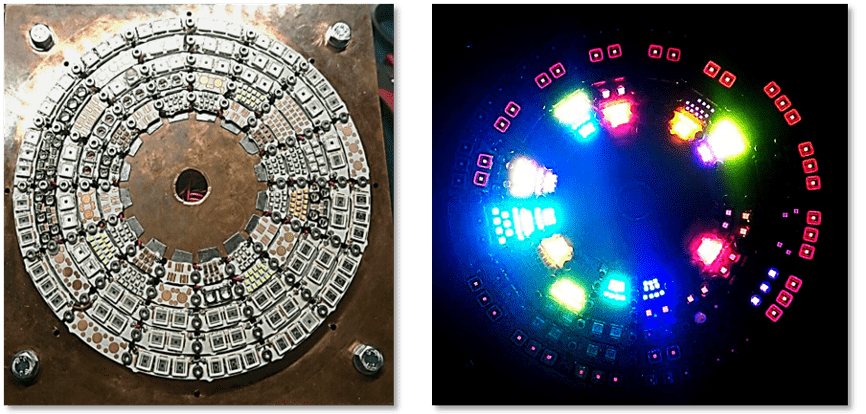Photosynthesis is probably the most important chemical reaction for life on Earth. It is the process plants use to transform sunlight into energy it can use. Through it, plants can produce carbohydrates they can use (and we can eat when we harvest plants), generating oxygen as a by-product.
Photosynthesis is why Earth’s atmosphere is about 20% oxygen. No photosynthesis, no life on Earth as we know it. It’s also the reason so many plants are green.
Most plants use chlorophyll as part of the photosynthesis process, which reflects green light while absorbing red and blue light through photosynthesis. If you think about it, that’s a bit odd, since the Sun gives off its most intense light in the green range of the spectrum. There is actually a photosynthesis chemical known as retinal which absorbs green and reflects red and blue.
If plants used retinal instead of chlorophyll, then most plants would be purple . Some bacteria use retinal, but it turns out for sunlight that chlorophyll is more efficient, so overall it gives more bang for your buck. It’s possible that early life used retinal, which is a simpler molecule, before figuring out how to use chlorophyll.
Of course, photosynthesis evolved to take advantage of a bright yellow star that emits most of its light in the visible spectrum. But Sun-like stars make up less than 8% of main sequence stars in our galaxy. Red dwarfs, on the other hand, make up 75% of main sequence stars.
Statistically, the vast majority of potentially habitable planets orbit a red dwarf. And red dwarfs are much smaller and cooler than our Sun. Most of the light they emit is in the infrared.
Infrared light is nice and warm, but does it have the kick you need to power photosynthesis? In a recent study, a research team tried to find out. Remove All Ads on Universe Today Join our Patreon for as little as $3! Get the ad-free experience for life To do this they created a starlight simulator. It’s an array of LEDs set up to mimic the spectrum of a red dwarf.
The device can mimic the spectra of various types of stars, but since red dwarfs are so common they studied that first. They then created an atmosphere that might be typical for an early habitable world, tossed in some bacteria, and illuminated it with simulated starlight. They started with cyanobacteria, which were among the first type of organisms on Earth to use photosynthesis to produce oxygen.
They are particularly good at surviving in harsh environments. The cyanobacteria thrived and grew under the infrared glow of a red dwarf, so the team repeated the experiment with red and green algae. Both of them thrived as well.
So even though red dwarfs don’t emit the type of light which drove the evolution of photosynthesis, terrestrial organisms could live under a red dwarf sun. This is great news for everyone wanting to find extraterrestrial life. Of course, there are other challenges with red dwarfs that might rule out life on their worlds.
The stars are known to emit powerful flares that might strip the atmospheres of close worlds, and they might not have the elemental resources necessary for complex organisms. But it is a great study that has shined a little light on our understanding of life on other planets. Reference: La Rocca, N.
, et al. “ Responses of eukaryotic photosynthetic organisms to simulated M-dwarf star light . ” Europlanet Science Congress EPSC2022 (2022): 495.
.
From: universetoday
URL: https://www.universetoday.com/157764/life-can-thrive-around-even-the-smallest-stars/



